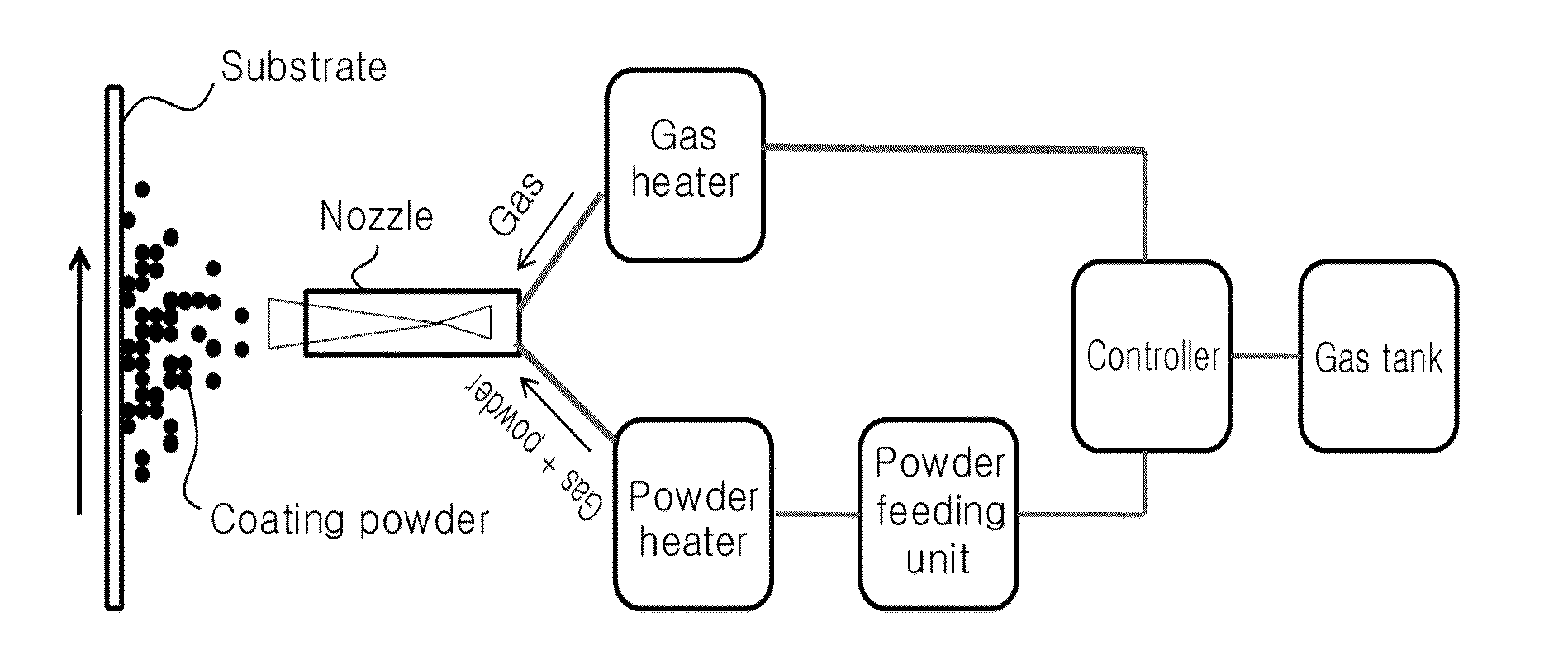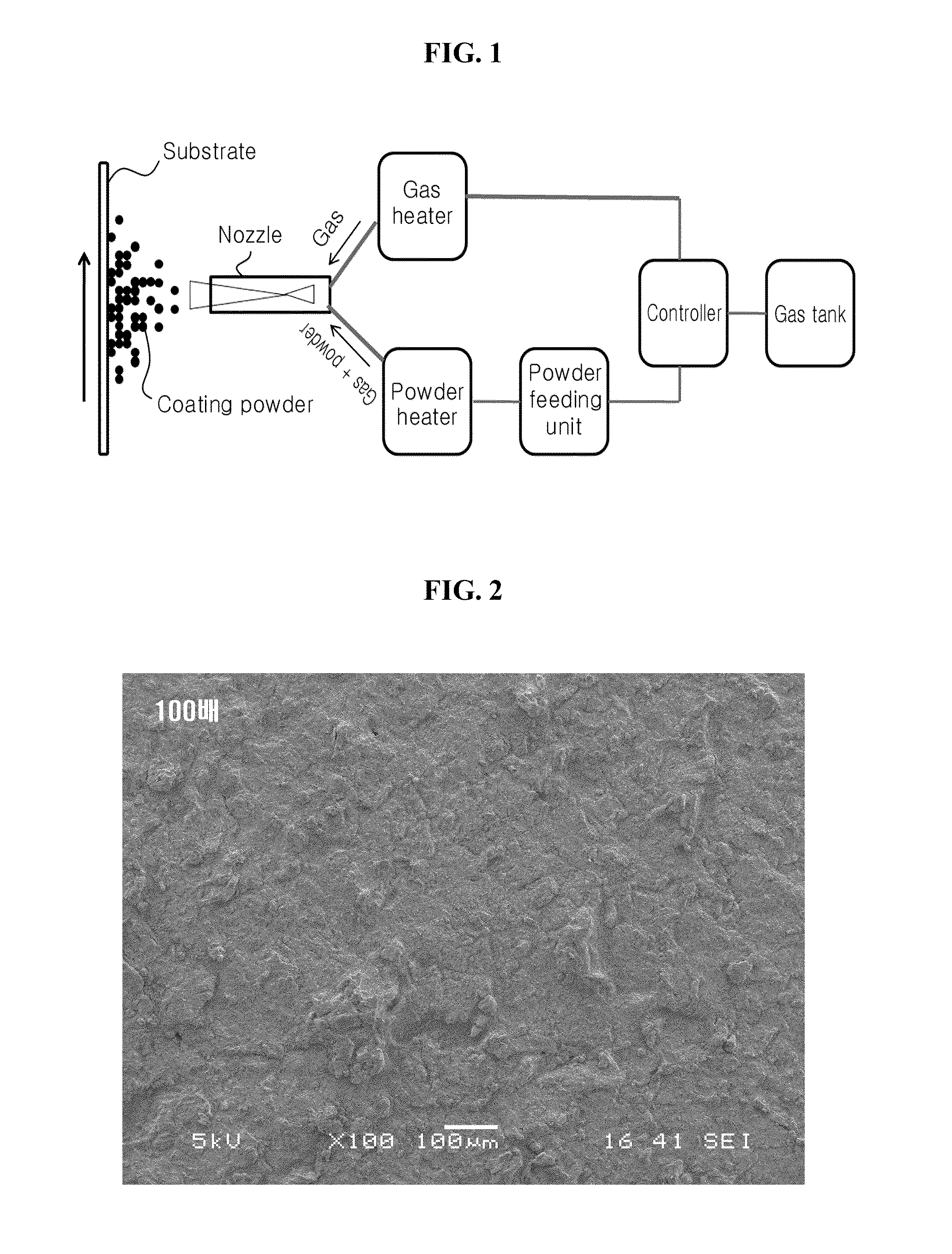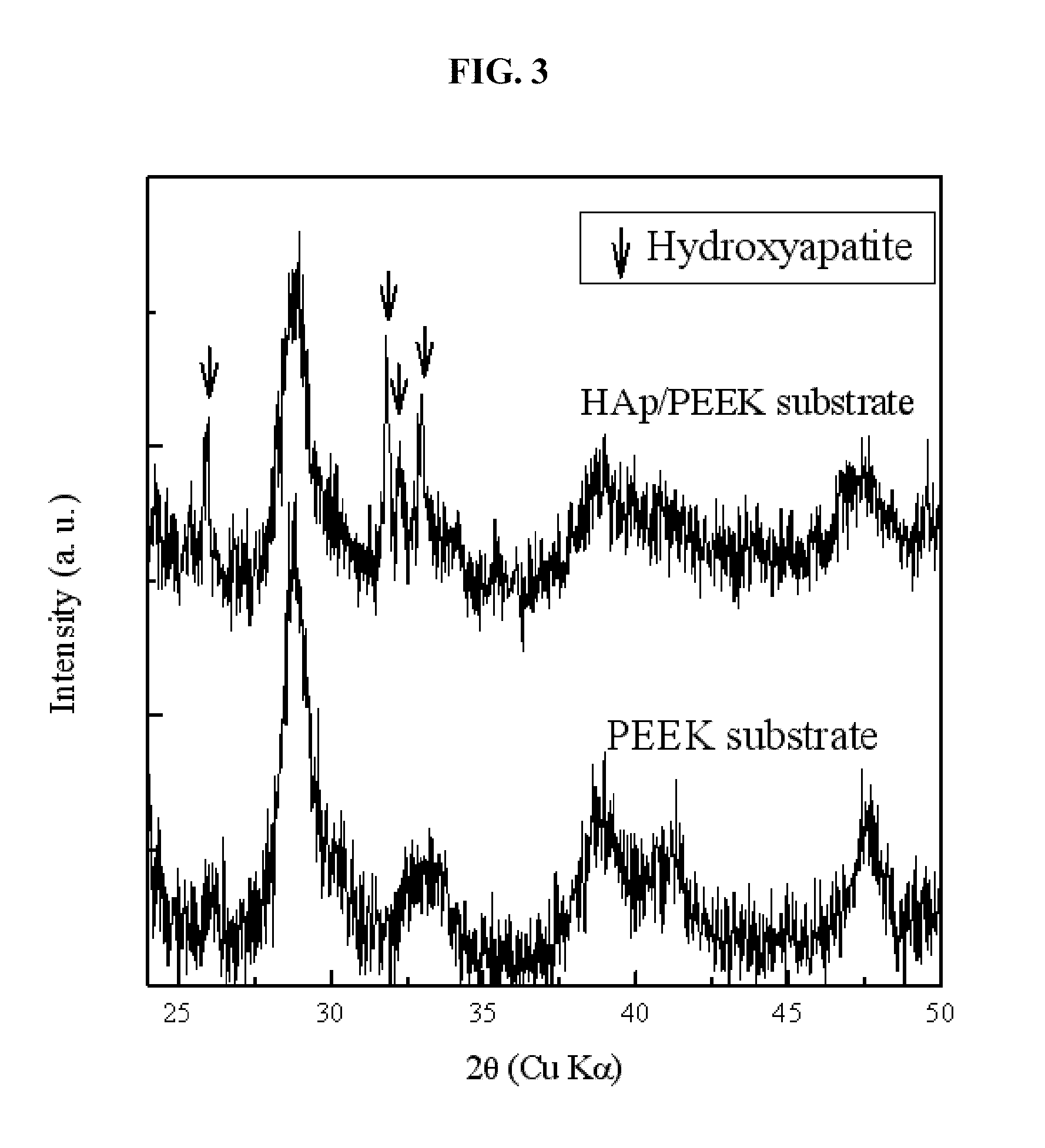Method for modifying the surface of a bioinert material
- Summary
- Abstract
- Description
- Claims
- Application Information
AI Technical Summary
Benefits of technology
Problems solved by technology
Method used
Image
Examples
examples
[0049]Hereinafter, the present invention will be described in more detail by way of Examples. However, the present invention is not intended to be limited to the following Examples.
[0050]As the bioinert material used as a base material, polyether ether ketone (PEEK), which is a polymeric biomaterial, was used. As the bioactive powder, a hydroxyapatite powder having an average particle size of 1 to 20 μm and a Ca / P ratio of 1.67 was used. This hydroxyapatite powder was cold sprayed onto the surface of the PEEK base material, and thus a bioactive layer was formed thereon.
[0051]At this time, an apparatus as depicted in FIG. 1 was used as the cold spray coating apparatus, and air was used as the carrier gas. The temperature of the gas used was controlled to 500° C., and the pressure was set to 20 kg / cm2. The temperature of the bioactive powder and the base material substrate was all adjusted to normal temperature, and the distance between the spray nozzle and the PEEK base material surf...
PUM
| Property | Measurement | Unit |
|---|---|---|
| Temperature | aaaaa | aaaaa |
| Temperature | aaaaa | aaaaa |
| Particle size | aaaaa | aaaaa |
Abstract
Description
Claims
Application Information
 Login to View More
Login to View More - R&D
- Intellectual Property
- Life Sciences
- Materials
- Tech Scout
- Unparalleled Data Quality
- Higher Quality Content
- 60% Fewer Hallucinations
Browse by: Latest US Patents, China's latest patents, Technical Efficacy Thesaurus, Application Domain, Technology Topic, Popular Technical Reports.
© 2025 PatSnap. All rights reserved.Legal|Privacy policy|Modern Slavery Act Transparency Statement|Sitemap|About US| Contact US: help@patsnap.com



